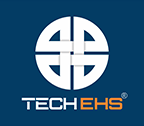
Table of Contents
Introduction
Safety is paramount, whether trucks carry materials to and from the construction site or work internally at the site. Both these fleets encounter significant challenges while driving on-site, which could lead to near-severe misses or accidents. Let us explore the importance of defensive driving at a construction site.
A construction site is a world in itself. Once you pass the main gate, you actually come to know the efforts that go into building stuff, and maybe it is a property, road, bridge, or even public place. Now, this world in itself requires transportation services. And this transportation service is not like the one we have on general roads and railways.
These transportation services have vehicles and equipment that need to be driven in the most bizarre scenarios. For example, they must drive through wet sand, dodging excavation sites, rubble, cement, etc. The list is exhaustive.
Therefore, driving safety at a construction site remains a prominent issue. Even years of experience can sometimes not prevent driving errors and workplace incidents.
Government rules and regulations work as fundamental guidelines to ensure a safe and accident-free site, particularly regarding the vehicles and moving equipment used for construction. They contain the dos and don’ts of driving at a construction site to ensure the driver’s safety and the safety of others on the road or, in this case, the site.
Let us begin by understanding the challenges, especially about driving at the construction site.
Challenges of Driving at Construction Site
Safety is paramount, whether trucks carry materials to and from the construction site or work internally at the site. Both these fleets encounter a significant number of challenges while driving on-site, which could lead to near severe misses or accidents.
Let’s just quickly understand what points could end up being quite the risk when driving:-
On the surface, these are driving challenges faced on the construction site. The drivers face daily challenges as the site work progresses. So, how does one ensure foolproof safety?
Well, here are some tips that may help reduce accidents, incidents, and injuries, particularly due to driving. If implemented correctly, these defensive driving training materials will ensure driving and construction driver safety in the best way possible.
Tips for Driving Safety at Construction Site
Wearing someone’s shoes and knowing the current situation is far different from simply guiding them. This means that it is vital that the driver precisely knows the vehicle that they are going to be driving. After that, the defensive driving safety talk and guidance should be used to refresh what the driver already knows, to inform them about the construction site, the type of terrain, the weather conditions, etc.
Correct Wrong Driving Habits Immediately
The safety authorities must immediately address bad driving habits. This may be noticed physically or in their digital systems. For example, if one of the drivers does not follow the barricade or fencing system or exceeds the decided speed limit to try to reach faster, they should be immediately corrected. These immediate actions help create awareness.
Designated Entry and Exit Points
Giving dedicated entry and exit points for vehicles or mobile equipment. The entry-exit points should be mapped in such a way that it is wide enough for accessible entry/exits, convenient loading & unloading of materials is possible and they should be far from everyday pedestrians’ in and out gates. This may seem minor, but it makes a huge difference. The drivers can drive without the fear of injuring workers, and also, these entry points can satisfactorily evaluate and check the credentials of the drivers or inspect the vehicles etc. if required.
Make the Use of Spotter Compulsory and Definite
A spotter is best described as a qualified expert whose responsibility is to ensure a job is done in the safest manner possible to avoid injury, warning others of any unsafe approaches to a job or project. A spotter ensures double the safety of the construction vehicles. They should wear highly visible clothes and maintain a position wherein the driver can see their signs clearly. Spotters can view the blind spots, ensure safe loading and unloading, and effectively communicate with the driver.
Provide Defensive Driving Safety Toolbox Talk Regularly.
Defensive driving training must be provided despite the driver having the required license. It is like brushing up on the laws and guidelines in case they have forgotten any. Organising daily toolbox talks can help refresh this information or bring to light a few key points before commencing the work.
Some inclusions of the essential training are:-
The list can be configured according to the driver’s work. However, it should be updated and reminded regularly.
Why Does It Require Attention?
Driver focus, behavior, skills, and safety are the prime components for positive and safe working at a construction site. The safety manager must foresee that the drivers have the required skills, knowledge, tools, and training to be efficient at their jobs. Perform surprise checks to determine the current status of the vehicle and the driver.
Proper defensive driving training ensures;
We know the various challenges that already preside over a construction site. The constant risk of incidents/accidents/near misses can be daunting. It becomes two-fold when it comes to the gigantic vehicles & mobile equipment moving around the uneven terrain of the construction site. These few tips, from the many, could help to a certain extent.



